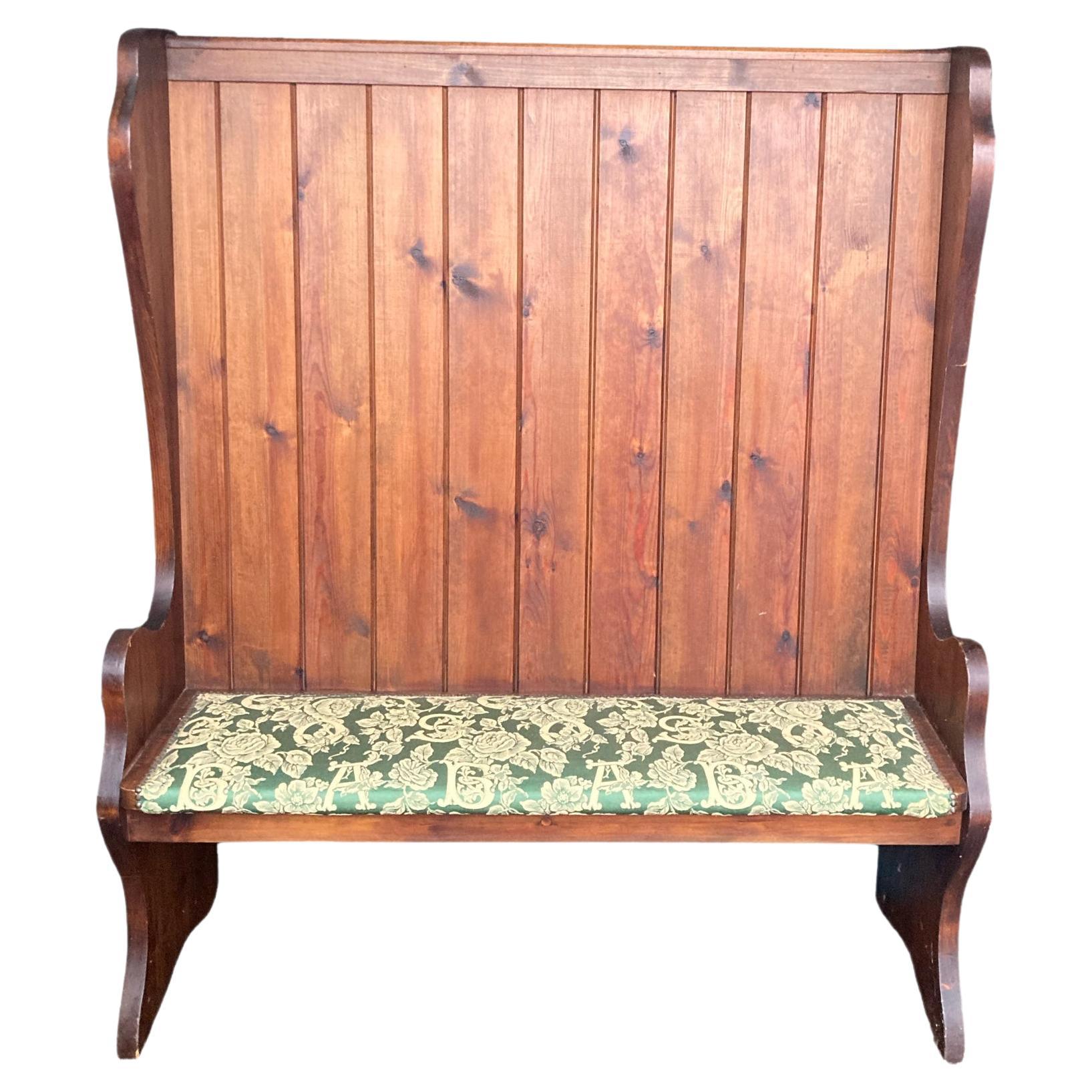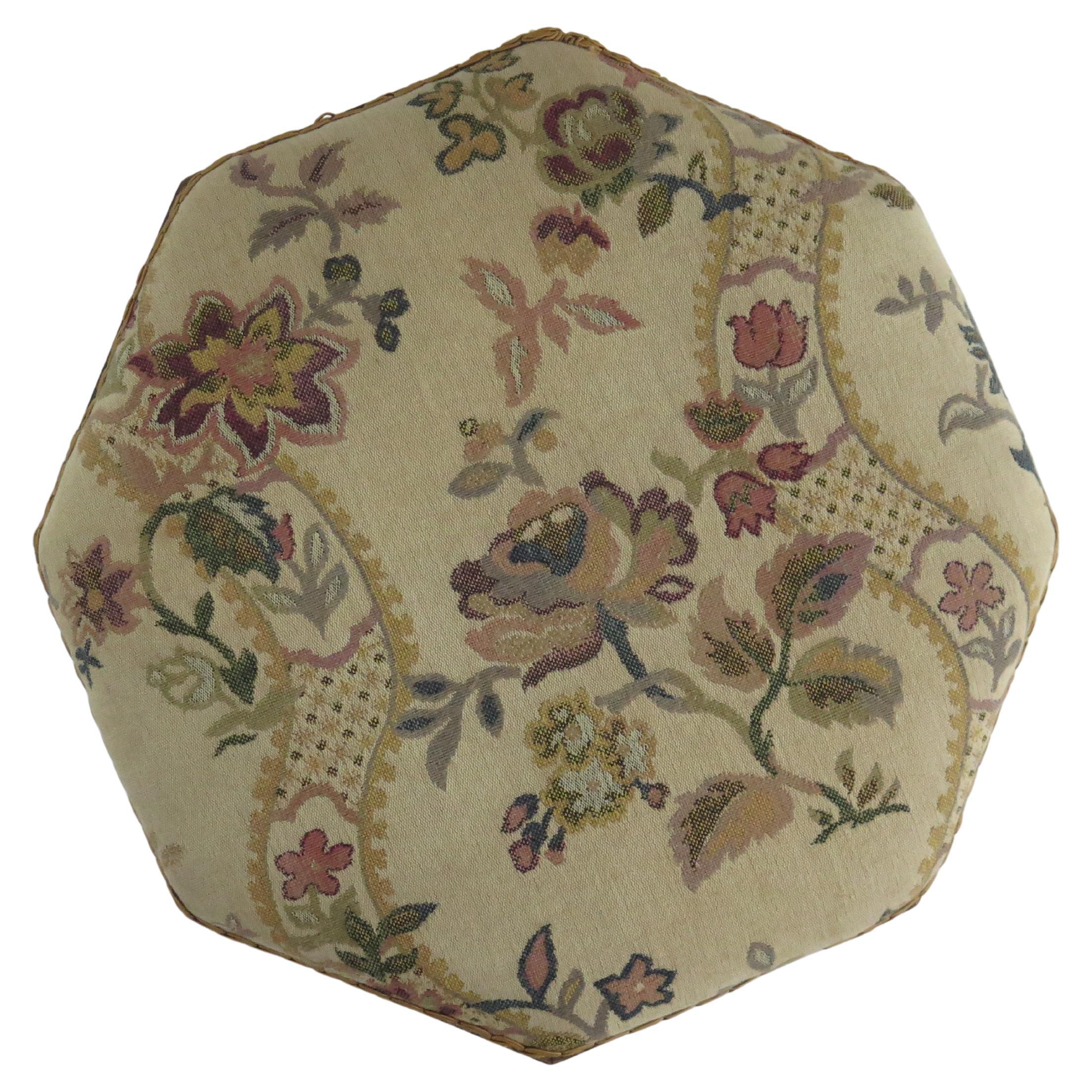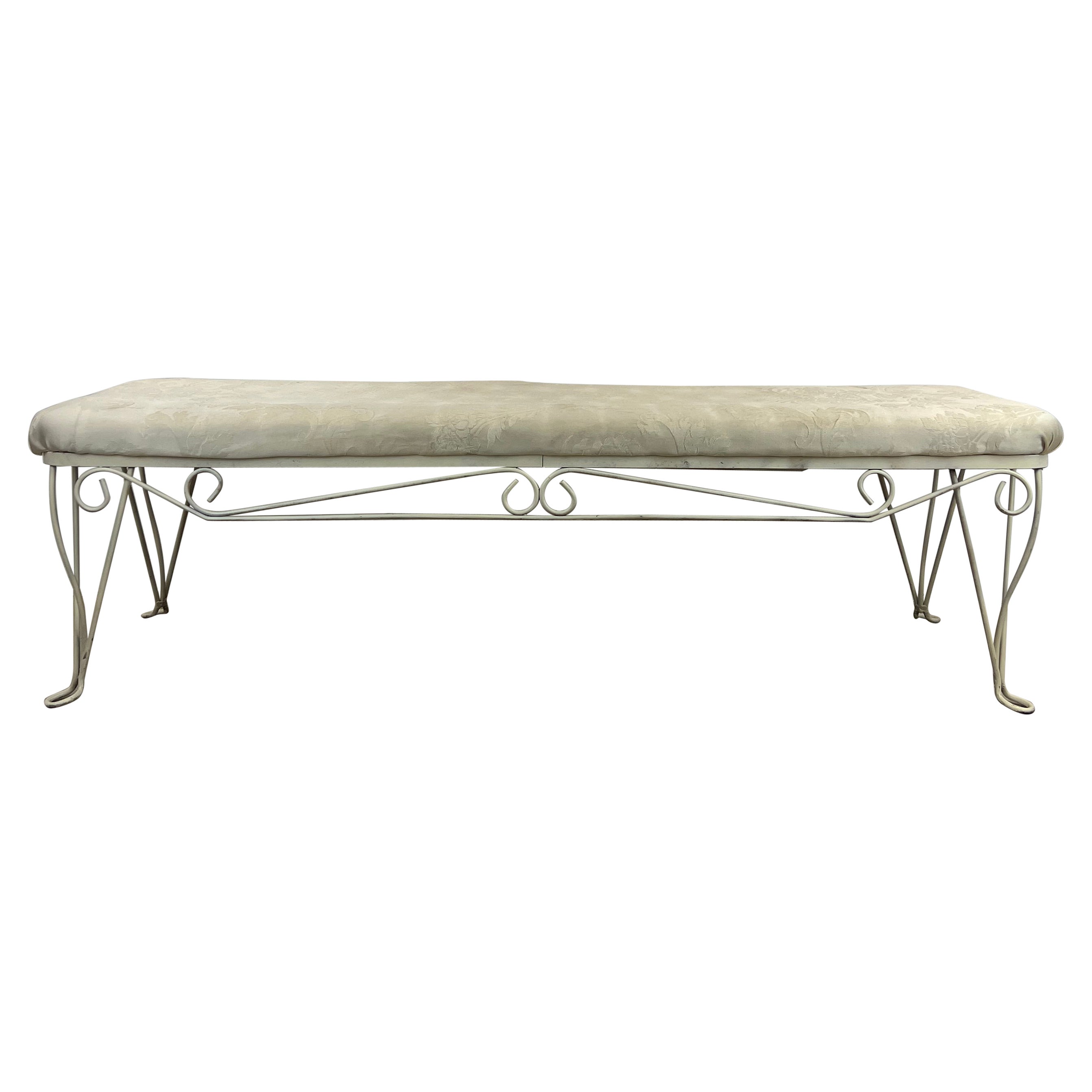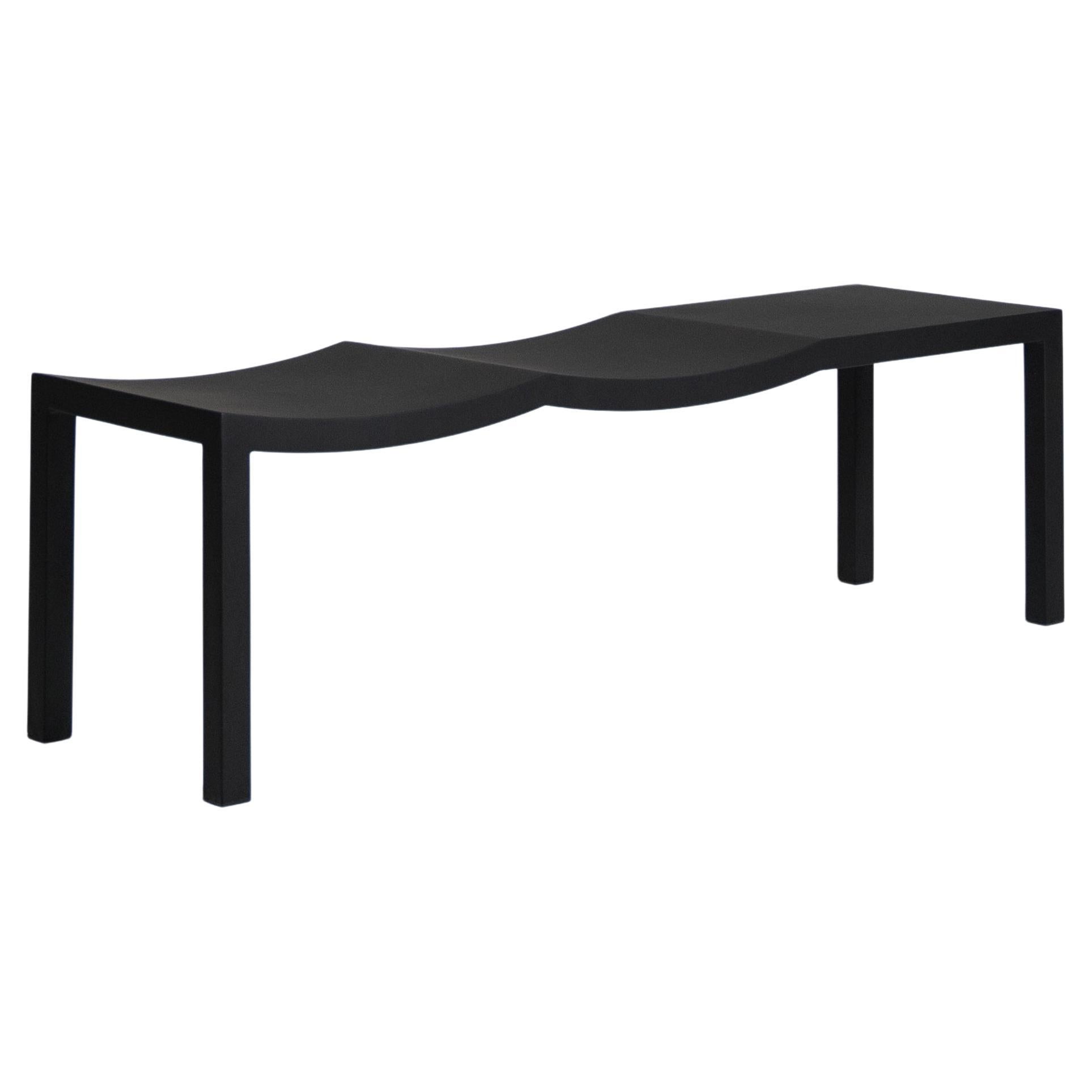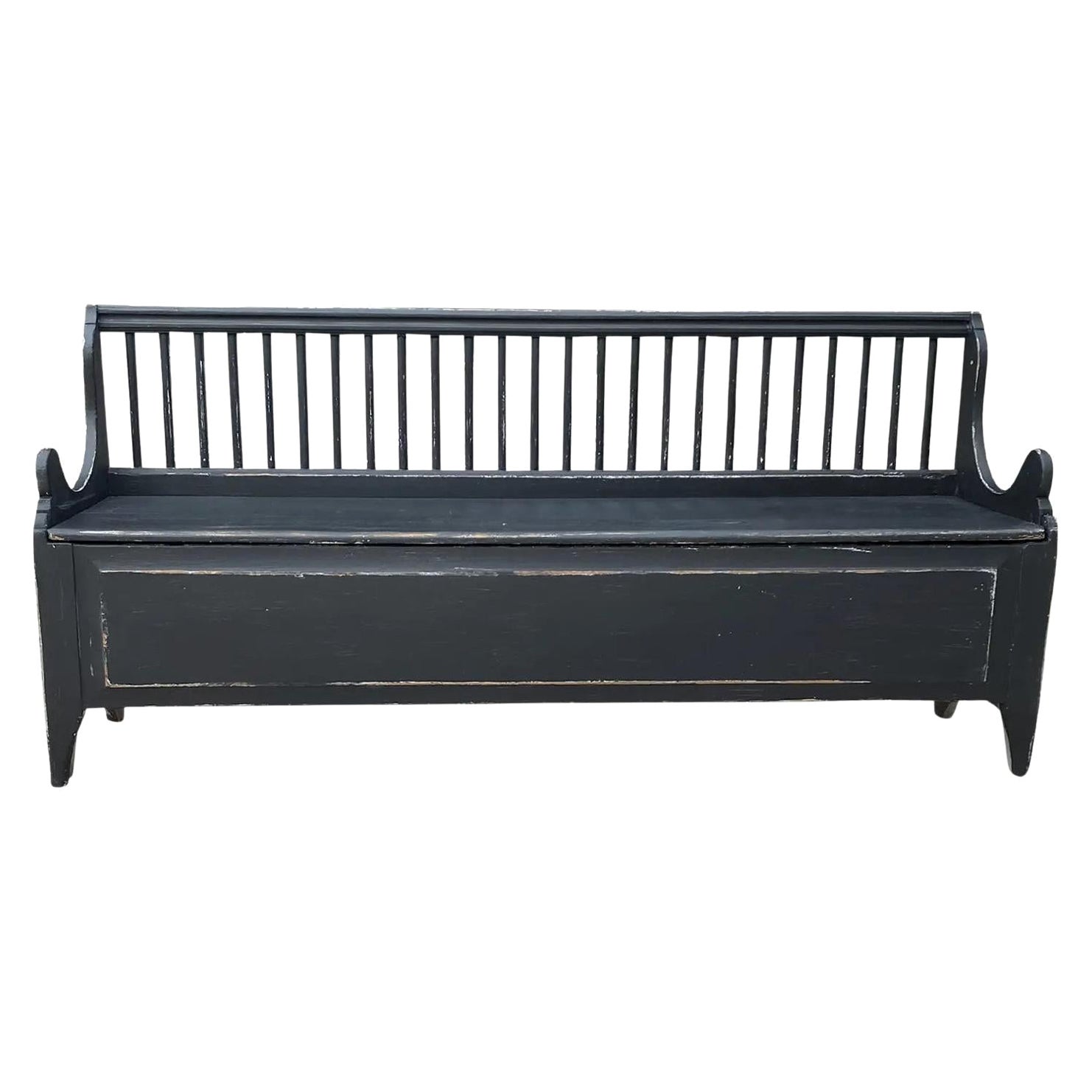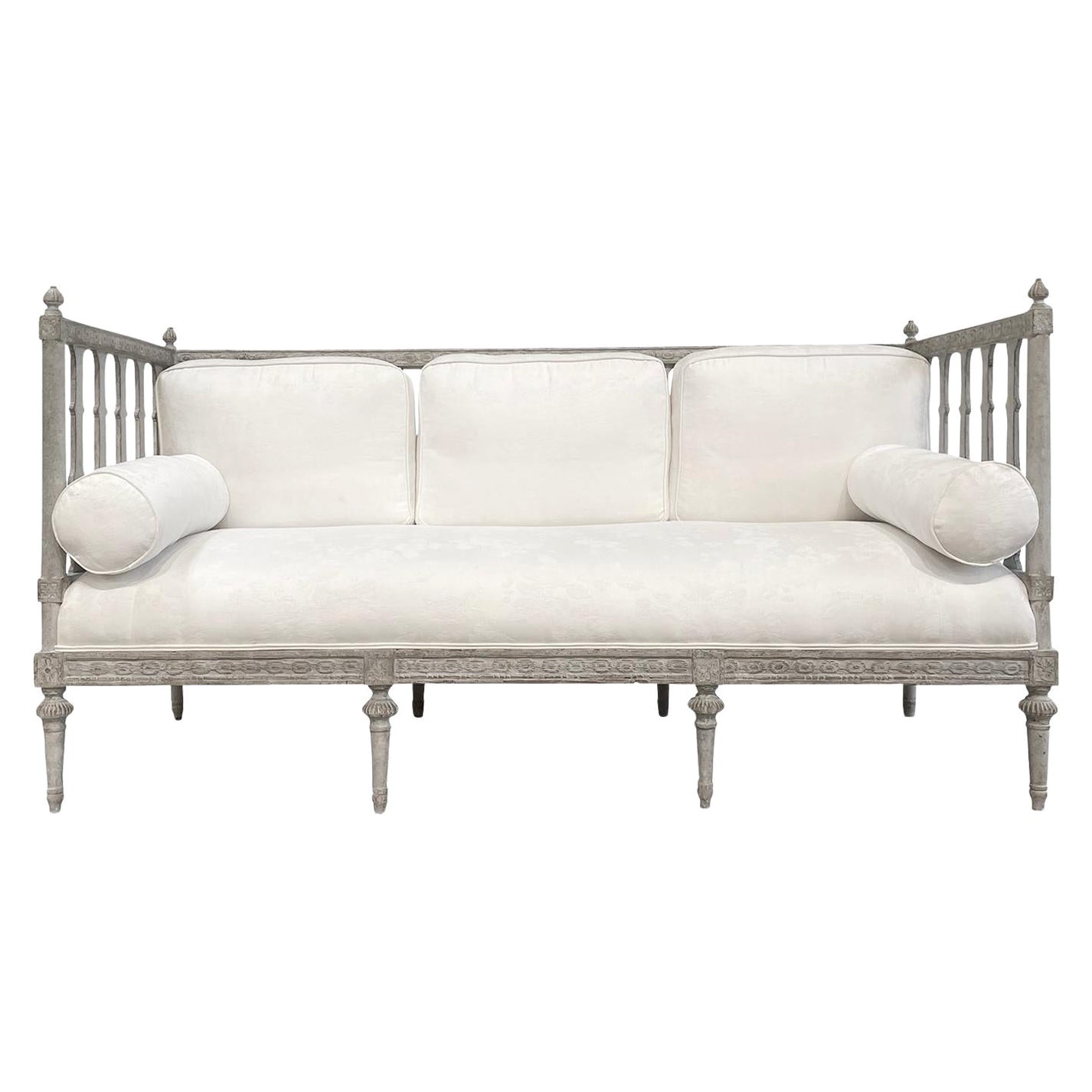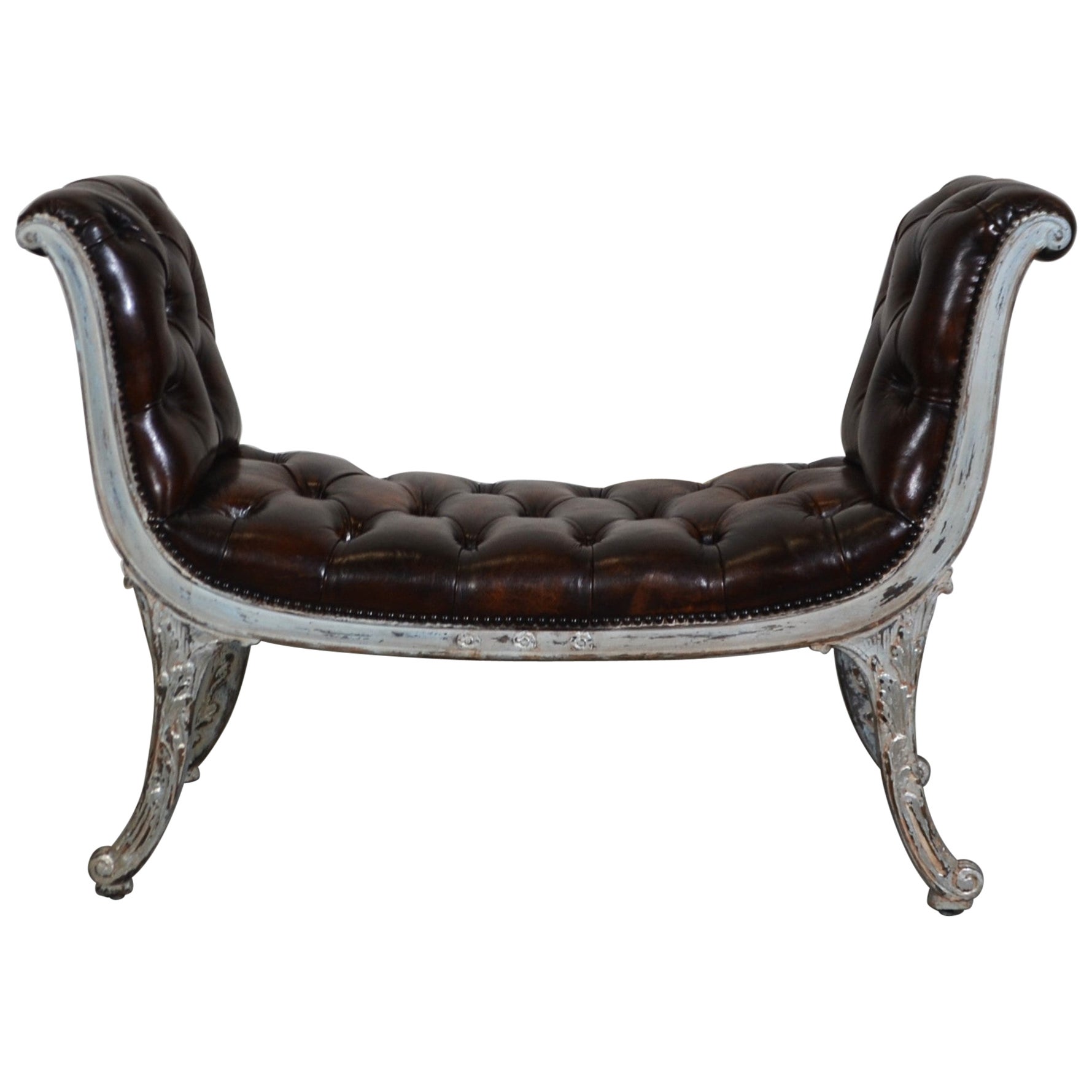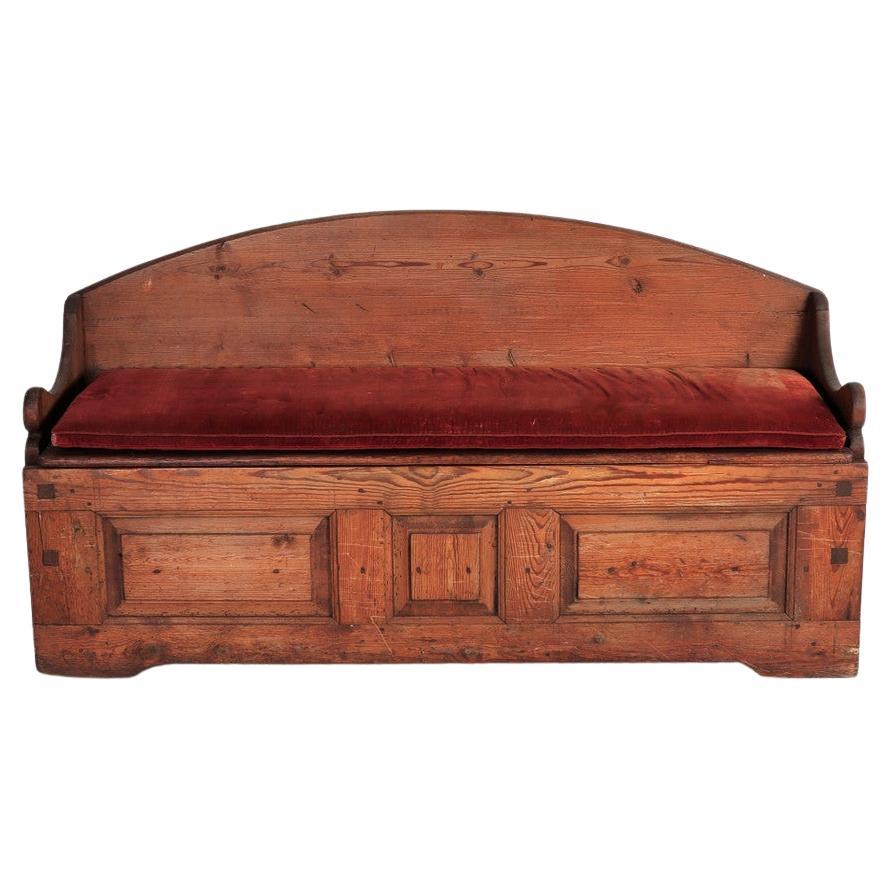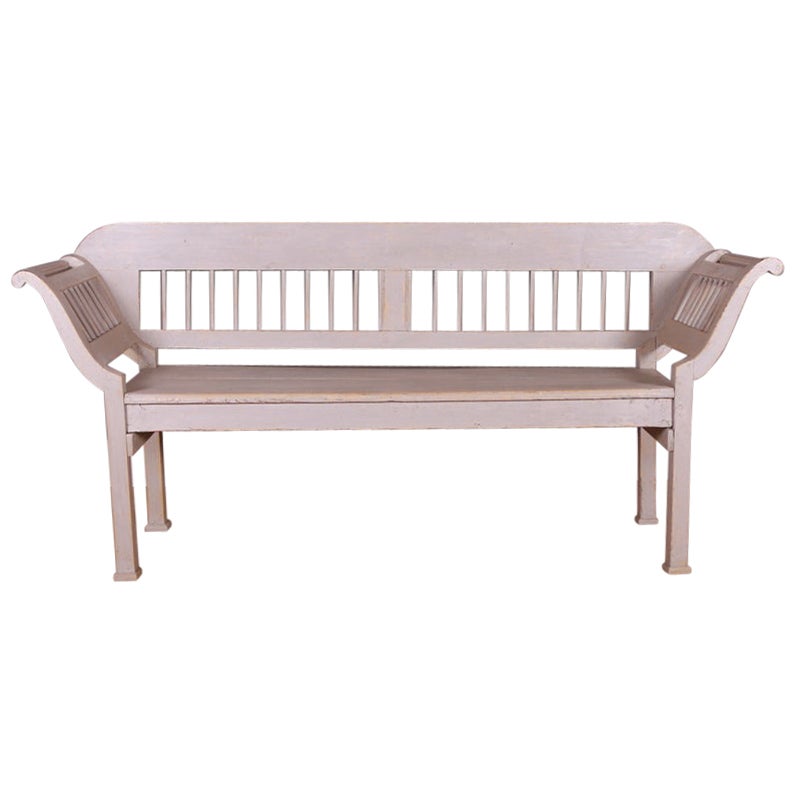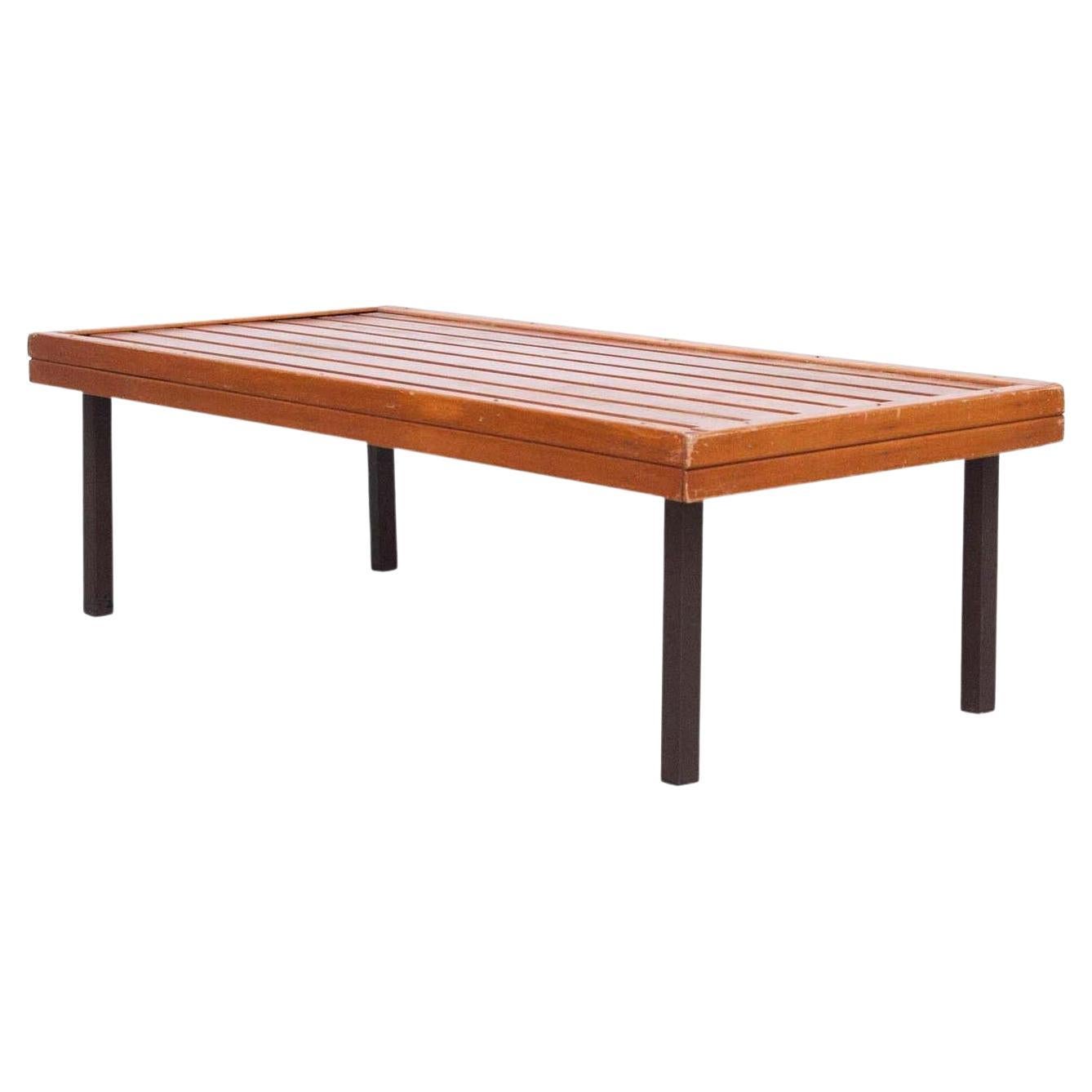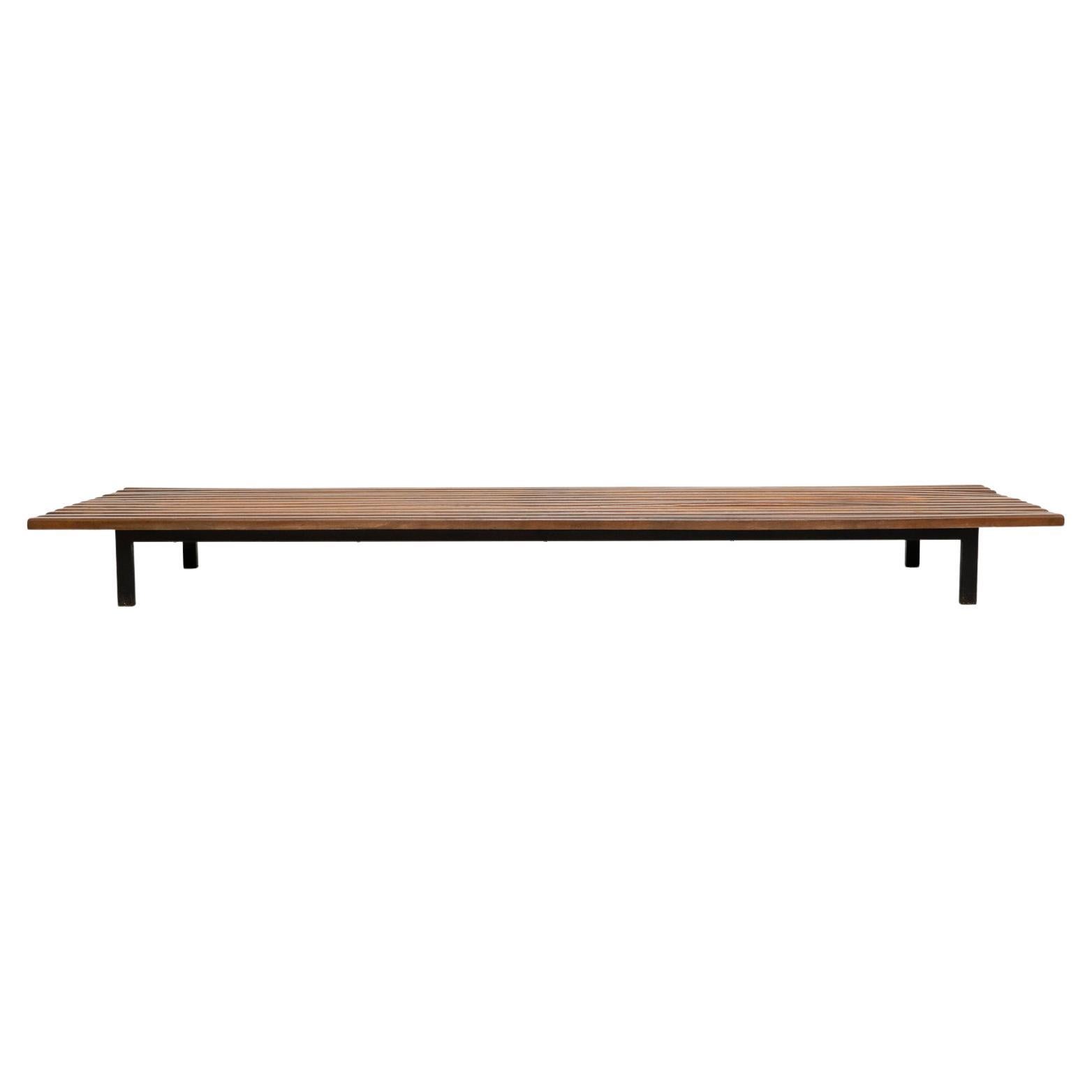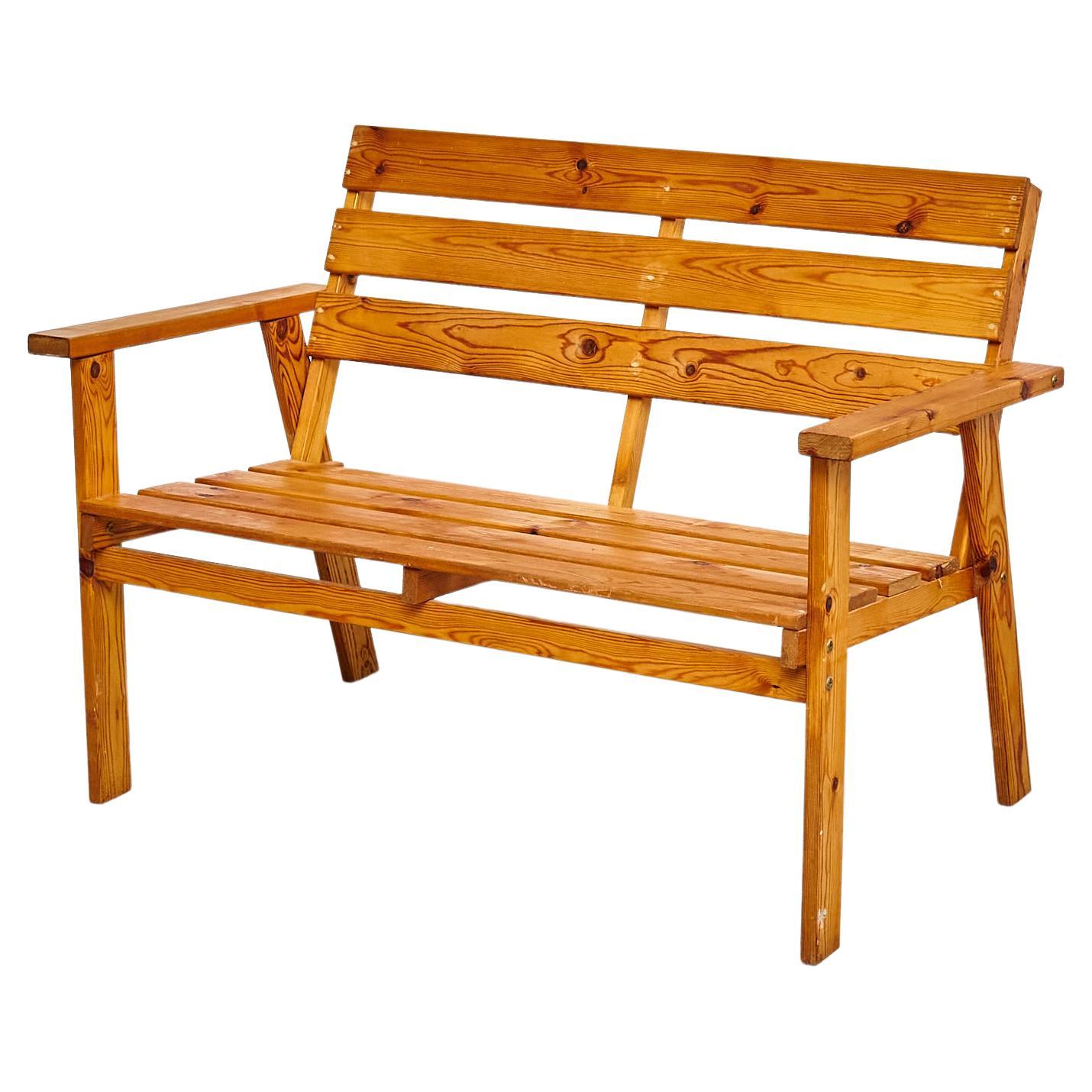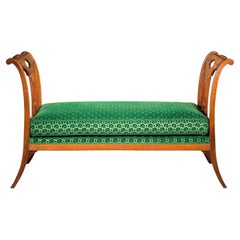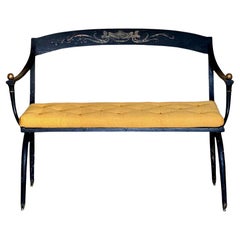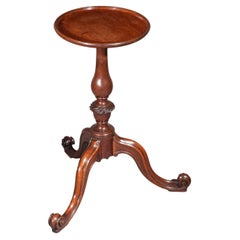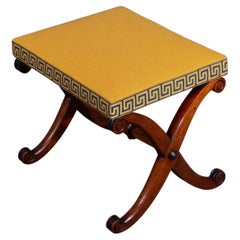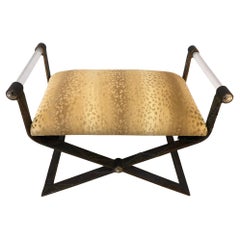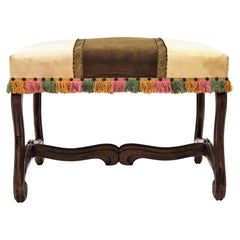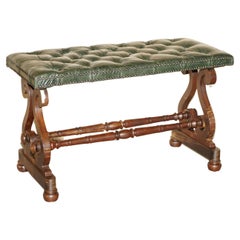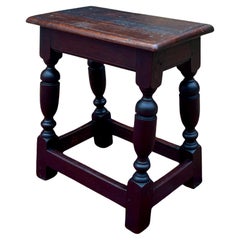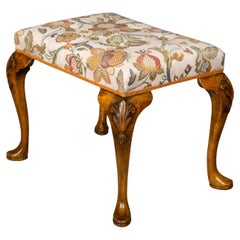
Antique Georgian Style Walnut Bench or Footstool, England
View Similar Items
Want more images or videos?
Request additional images or videos from the seller
1 of 9
Auction endedBrowse Current Auctions
Antique Georgian Style Walnut Bench or Footstool, England
About the Item
- Dimensions:Height: 18 in (45.72 cm)Width: 24 in (60.96 cm)Depth: 16 in (40.64 cm)Seat Height: 18 in (45.72 cm)
- Style:Georgian (In the Style Of)
- Materials and Techniques:
- Place of Origin:
- Period:
- Date of Manufacture:circa 1900-1920
- Condition:Reupholstered. Wear consistent with age and use. good mellow colour to walnut, new traditional upholstery. ready to use and enjoy!
- Seller Location:Richmond, GB
- Reference Number:1stDibs: LU1781230246942
About the Seller
5.0
Platinum Seller
Premium sellers with a 4.7+ rating and 24-hour response times
Established in 2014
1stDibs seller since 2016
234 sales on 1stDibs
Typical response time: 4 hours
Associations
LAPADA - The Association of Arts & Antiques Dealers
Authenticity Guarantee
In the unlikely event there’s an issue with an item’s authenticity, contact us within 1 year for a full refund. DetailsMoney-Back Guarantee
If your item is not as described, is damaged in transit, or does not arrive, contact us within 7 days for a full refund. Details24-Hour Cancellation
You have a 24-hour grace period in which to reconsider your purchase, with no questions asked.Vetted Professional Sellers
Our world-class sellers must adhere to strict standards for service and quality, maintaining the integrity of our listings.Price-Match Guarantee
If you find that a seller listed the same item for a lower price elsewhere, we’ll match it.Trusted Global Delivery
Our best-in-class carrier network provides specialized shipping options worldwide, including custom delivery.More From This Seller
View All18th Century Louis XVI Bedroom Bench or Daybed by George Jacob
By Georges Jacob
Located in Richmond, London
A fine French late 18th century Klismos bench, of great colour and desirable generous proportions.
Stamped G.Jacob.
France, circa 1795.
Why we like it
A handsome, timeless design. With its curved sabre legs at either end, this bench relates to the ancient Greek 'Klismos' seats, often seen depicted on Attic pottery. Its superb quality, splendid patination and a recorded maker...
Category
Antique Late 18th Century French Directoire Benches
Materials
Upholstery, Wood
Rare 19th Century Painted Bench or Settee, ex-Madeleine Castaing, after Chapuis
By Jean Joseph Chapuis
Located in Richmond, London
A very rare 'curule' settee, late 19th century after a design by Jean-Joseph Chapuis.
Provenance: Madeleine Castaing, Maison de Lèves, Chartres, France.
Why we like it
Besides the iconic provenance, this bench is a great example of the 19th century design, informed by classical antiquity. Decorated in the exotic 'Etruscan' style to simulate patinated bronze, with its dramatically exaggerated curves, evoking the ancient Roman 'sella curulis' - a symbol of magisterial power, this settee is truly a special example of its kind. A squab cushion covered in a fabric complimenting other textiles in the existing interior will complete the look of this super-stylish bench.
Provenance – Madeleine Castaing
Together with a pair of armchairs en-suite (sold by us in may 2022), this settee was photographed in the vestibule at Maison de Lèves near Chartres - country house of the iconic French interior designer and antiques dealer Madeleine Castaing (1894–1992). Madeleine married the heir and art critic Marcellin Castaing – the legendary love of her life – who in the 1920's acquired a neoclassical gentilhommière at Lèves, that she had been admiring since her days in a convent school nearby, for her to "unwind" as he explained. The house would become one of her masterpieces as she discovered her own vocation for interior design. Extant photographs reveal a number of changes that had been made to the interiors over time. The writer Maurice Sachs once wrote about Madeleine's passion for her home: “The constant transformations she made to the estate kept her as busy as the world can keep a socialite…”. The contents of Maison de Lèves as well as Castaing's Rue Jacob...
Category
Antique Late 19th Century Belgian Neoclassical Revival Benches
Materials
Wood, Cane, Upholstery
18th Century Georgian Kettle Stand or Wine Table, circa 1750
By Thomas Chippendale
Located in Richmond, London
An exquisite 18th century George II kettle stand or wine table in the Chippendale 'French' taste.
England, circa 1760.
Why We Like It
We love its s...
Category
Antique Early 18th Century European George II Candle Stands
Materials
Wood
Early 19th Century X-Frame Stool
By Gillows of Lancaster & London, Thomas Hope
Located in Richmond, London
A rare example of a finely drawn Regency period x-frame stool or bench, beautifully upholstered in butter yellow cotton with wide Greek key meander trim. Of Gillows style and quality...
Category
Antique Early 19th Century English Regency Benches
Materials
Upholstery, Wood
Pair of Klismos Stools
Located in Richmond, London
A pair of Regency style 'Klismos' stools or benches, upholstered in beautiful horsehair fabric. It is rare to have two stools available in this classical design.
Why we like them
Th...
Category
Antique 19th Century English Neoclassical Stools
Materials
Upholstery
$4,001 / set
Large Antique Coromandel or Kuancai Lacquer Screen
Located in Richmond, London
A superbly decorative six-panel lacquered 'Coromandel' screen, exquisitely carved and hand-painted with oriental figures, flowers and exotic beasts on a dark brown background, in the traditional 17th century manner.
Late 19th – early 20th century.
Why we like it
We like its impressive proportions which make it perfect for a feature wall, and the exquisite quality of decoration. The subtlety of colours lends a 'soft' look to the piece. The central motif depicts a scene set in the gardens of a Han dynasty palace, while the outer borders are decorated with the “one hundred antiques” motif interspersed with floral arrangements. In this regard, the present screen not only conveys auspicious meanings but also demonstrate the owner’s fine scholarly taste.
History
The term 'Coromandel', which is used to describe this particular type of lacquer technique (kuancai), is rather misleading. In the 18th century it was used commercially to indicate the place from which these objects were shipped to England through the East India Companies, and had no reference to China, the place of their origin. Similarly, Chinese painted wallpaper was often called 'India paper' in historic documants.
The kuancai lacquer technique, literally meaning “cut out colour” and found almost exclusively on screens, emerged in the 16th century to serve the domestic market. The iconographic elements were carved through the built-up coats of dark lacquer and filled with pigments and gold. Seventeenth century examples usually consisted of twelve panels, and were often employed in entrance halls or as room dividers or windscreens for gardens and terraces. They were often commissioned as gifts and depicted court scenes, episodes from the world of the immortals, panoramic or landscape views and auspicious symbols. This type of lacquerware was flourishing during the reign of the Kangxi emperor (1662-1722) and saw a revival in the 19th century.
Stylistically the present screen may be compared with the twelve-panel lacquer screen from the Kangxi period in the Victoria and Albert Museum illustrated by W. De Kesel and G. Dhont in Coromandel Lacquer Screens, ill. 23, pps 36-37.
Such luxurious items were popular in England during the height of fashion for oriental exoticism, called chinoiserie in Europe. In the 20th century, Coromandel screens still remained a staple in the European interior design. Coco Chanel had a collection of 32 rare Coromandel screens, which she proudly displayed in her home at 31 Rue Cambom, Paris. She one...
Category
Early 20th Century Asian Chinoiserie Screens and Room Dividers
Materials
Wood, Lacquer
You May Also Like
Mid-Century Modern Style Window Bench or Footstool with Lucite Arms
By Paul Evans
Located in Manhasset, NY
Mid-Century Modern Paul Evans Style window bench or footstool with Lucite arms.
This welded all colorful metal footstool or window bench is simply stunning. Done in the Paul Evan...
Category
Late 20th Century Hollywood Regency Stools
Materials
Metal
Os de Mouton Louis XIV Style Walnut Stool or Bench
Located in Barcelona, ES
Spanish Louis XIV style Ottoman,
Beautiful Louis XIV style bench or stool raised on four Os de Mouton hand carved walnut legs with stretcher, Spain, 1930s.
This stylish banquette ha...
Category
20th Century Spanish Louis XIV Benches
Materials
Fabric, Velvet, Wood, Leather, Walnut
Antique Victorian Heritage Green Leather Chesterfield Tufted Bench / Footstool
Located in West Sussex, Pulborough
We are delighted to offer for sale this lovely late Victorian circa 1900, heritage green leather upholstered, Chesterfield tufted bench stool.
A good looking well made and decorativ...
Category
Antique Late 19th Century British High Victorian Benches
Materials
Beech, Leather
Antique English Footstool Bench Joint Stool Turned Leg Oak Pegged c. 1900
Located in Tyler, TX
CHARMING Antique English Carved Oak Small Joint Stool Footstool Bench~~Pegged c. 1900
Classic British flair with turned legs~~ decorator piece
19" tall x 18" wide x 10" deep
Solid...
Category
Antique Early 1900s English Arts and Crafts Stools
Materials
Oak
Pair Antique Footstools or Benches
Located in New York, NY
Pair antique footstools or benches on casters with floral upholstery. Good condition overall with slight finish loss due to age and use. Can be...
Category
Early 20th Century North American American Classical Benches
Materials
Hardwood
$1,250 / set
Spanish Revival Carved Stool or Bench in Walnut, 1940s
Located in Barcelona, ES
Carved Walnut Curule Stool with Arms, Spain, 1930s-1940s.
Curule base with carved decorative details and arms at both sides.
To be used as stool, ottoman, night stand or occasional s...
Category
20th Century Spanish Renaissance Revival Stools
Materials
Wood, Walnut
Recently Viewed
View AllMore Ways To Browse
Chelsea Textiles Furniture
Chelsea Textiles
Antique Georgian Footstool
Atelier Pendhapa
Bank Of England Bench
Black African Benches
Bone Inlay Bench
Borge Mogensen 5273
Brown Saltman Slat Bench
Camelback Benches
Charlotte Perriand 514 Refolo
Charlotte Perriand Refolo Low Table
Chartreuse Bench
Chinese Altar Bench
Chishen Chiu
Church Bench Rietveld
Circular Tree Bench
Conant Ball Bench
